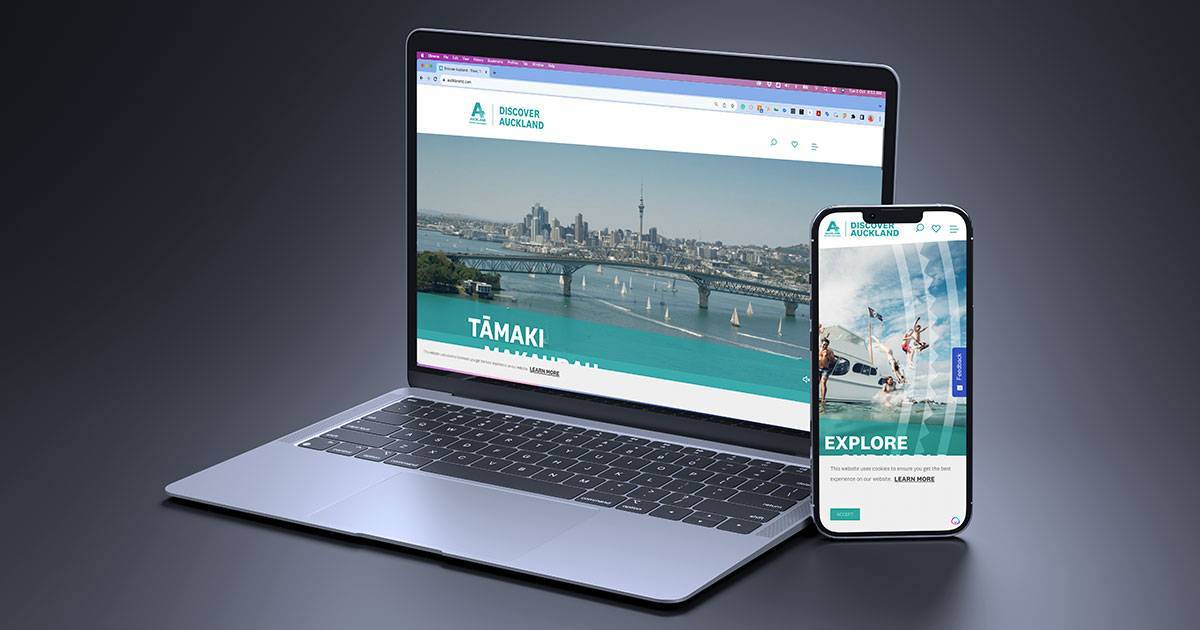Are you a business owner based in Auckland in need of a new website?
If so, you may feel like you should look for a website design company located in Auckland, assuming it will offer better service as they are local. However, is this really necessary? And is that necessarily true?
Well, let’s explore why you don’t actually need to use an Auckland website design company, based in Auckland. And why some companies around New Zealand are just as capable and skilled.
Websites are not just about pretty designs these days either. YOu want to find a company, that can create a great-looking, functional website, without a doubt. However, once launched, it doesn’t matter how awesome it looks or works if no one can find it right?
Times have changed. Website design has changed. In fact, traditional website design is broken! And furthermore, digital services have changed. There is no longer a need to rely on face-to-face contact all of the time.
Auckland Website Design can be done from anywhere
At Back9 Creative, we have been designing and building websites for many years with an experienced in-house team, and we want to help business owners and marketing professionals make the right decisions for their businesses. And that means choosing the right website design company for them. And that doesn’t always mean they’ll be in the same town or city.
Just like companies who sell online all around New Zealand, an office or store in each town is a thing fo the past. Just ask our mates at Safety 1st NZ!
When it comes to website design, location isn’t essential either. Companies around New Zealand, including those outside of Auckland, often have the same set of skills, resources, and tools to deliver high-quality websites. At Back9 Creative, we have clients from all over New Zealand, and technology has made it possible to communicate effectively without the need for frequent face-to-face meetings.
Our team is always available to have a phone call or video chat, and we’ve never previously had issues with this communication style.
Some other considerations include the following:
Competitive Pricing
One of the biggest advantages of looking beyond Auckland for website design is cost. Auckland is one of the most expensive cities to live and work in New Zealand, and this is reflected in the prices that website design companies charge. And they have to charge more, to cover those costs of website design in Auckland. If you’re on a budget, looking for a company based outside of Auckland could help you save hundreds or even thousands of dollars on your website project.
Remote work is now the norm
The COVID-19 pandemic seems like ancient history some days. But the reality is it has changed the way we work, and for many website designers, working remotely is now the norm. This means that you can work with a company based anywhere in the country, and still receive the same level of service and quality that you would expect from a local company. By broadening your search to include companies outside of Auckland, you may be able to find a website design company that’s a better fit for your needs.
In-person meetings are still possible
While remote work is now the norm, that doesn’t mean that in-person meetings are a thing of the past. Many website design companies are still happy to meet with clients in person, and Auckland is only a short flight away from many other cities in New Zealand. If you’re based in Auckland but are considering a company from outside the city, you can still arrange face-to-face meetings if needed.
Website Design Auckland, Wellington, or Wherever…
At Back9 Creative we approach website design in Auckland, Wellington, Christchurch, or even on our own doorstep in Invercargill the same way. We look at what you are trying to achieve from a website and we make that happen. By adopting an Inbound Growth-Driven Philosophy, a website can deliver massive results and generate exponential revenue. Even when you’re not selling online. You just need to understand a website is a neverending work in progress. It is a sales tool. And a website is like a staff member.
We’re about delivering long-term tangible results, and not a set-and-forget move-on to the next project kind of philosophy, so if you think that may be for you, then get in touch. We’d love to have a chat.
Don’t let location be a barrier to getting a great website
In conclusion, location isn’t a factor when choosing a website design company. The availability of technology and communication methods has made it possible to work effectively with companies located anywhere in New Zealand. With Back9 Creative, you will be working with an experienced team with specialized skills, resources, and tools to deliver high-quality websites. Plus, we’re always just a phone call or video chat away and provide cost-effective services. So, if you’re in need of a new website but don’t want to limit yourself to Auckland-based companies, Back9 Creative is here to help.













